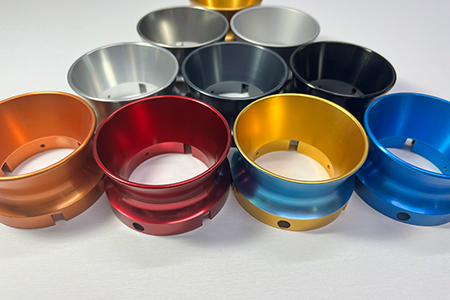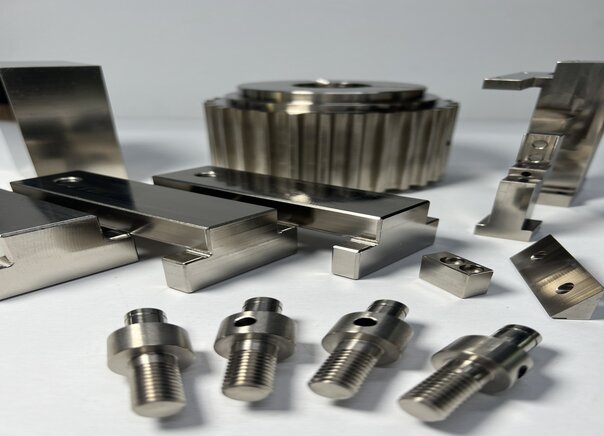- ABOUT US //
- Product characteristics
Product characteristics
1. ANODIZING
Anodizing coating is a natural insulator while most aluminum is conductive, with thicknesses from 3 to 28 µm (for hard anodizing thickness in the range ≥ 51 µm).
Increased corrosion resistance, and salt spray resistance up to over 350 hours.
Meet the products that require high accuracy and small tolerances.
Meet coating standards: MIL-A-8625 Type II, Type III, environmental standards: RoHS, Reach.


2. CHEMICAL FILM (ALODINE OR IRIDITE)
The coating is very thin and doesn’t change size.
Meets MIL-DTL-81706-B and MIL-DTL-5541F standards.
High corrosion resistance, salt spray resistance up to 336 hours.
3. ELECTROLESS NICKEL PLATING
There are 3 types of coating: low phosphorus coating (2 - 5% P), medium phosphorus coating (6 - 9% P), and high phosphorus coating (> 10% P). The non-electrolytic nickel plating process uses a chemical solution to deposit a nickel/phosphorus layer onto the metal surface.
The coating is uniform, has high hardness, and is non-magnetic (for high phosphorus coatings) making it suitable for use as an electromagnetic shield for electronic devices.
Has good corrosion resistance and chemical resistance.
Suitable on many types of base materials: aluminum, iron, steel...
Common technical standards for chemical nickel coatings: AMS 2404, AMS-C-26074, ASTM B733…



